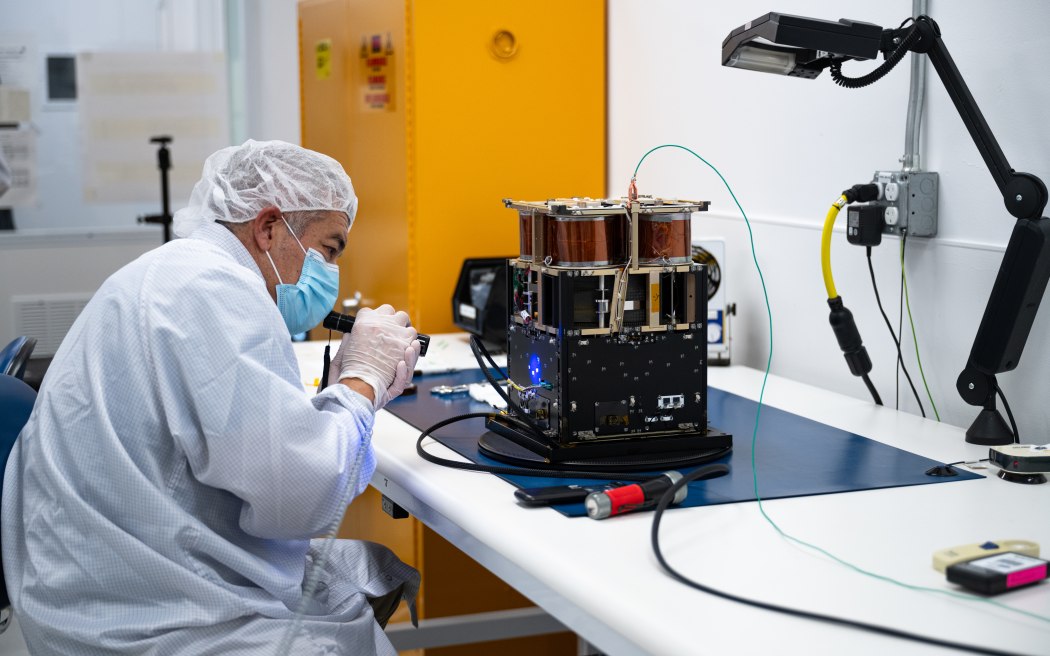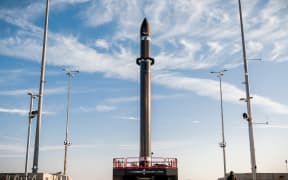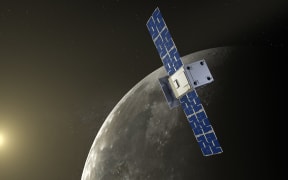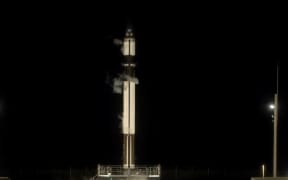Nasa has launched its new solar sail mission from the Māhia Peninsula in Hawke's Bay.
Once at a Sun-synchronous orbit, about 1000 km above Earth, the spacecraft will deploy its sails and use the pressure of sunlight for propulsion, instead of rocket fuel.
If the microwave oven-sized CubeSat is successfully deployed, the operation would be a precursor to larger-scale missions to the Moon and Mars, Nasa said.
The mission's principal investigator, Keats Wilkie, told Morning Report the solar sail was a thin but "very large mirror in space" made out of aluminium and plastic.
"The pressure of light exerts a pressure on objects. The sunlight bounces off of our sail and that gives us a tiny little push in the opposite direction.
"By angling our solar sail to the sun, sort of like a sailboat, you change your angle of the sail with the wind, we can change the direction of flight and we can do all this without burning any rocket fuel or propellant, so it's essentially a propellantless propulsion in space, so we never have to worry about running out of fuel."

An artist's impression of the Advanced Composite Solar Sail System spacecraft sailing in space using the energy of the Sun. Photo: Nasa / Aero Animation / Ben Schweighart
The satellite was a small box and inside it was a tightly packaged structure of composite booms and a very thin plastic film reflecting coating on it, he said. When fully deployed it measures about 10x10 metres.
It is not the first solar sail but it is the first to be launched from New Zealand.
"This is the first solar sail system that has all of the systems you need to actually fly and control the solar sail for propulsion."
The mission's primary objective is to successfully demonstrate the deployment of a new boom made from flexible polymer and carbon fibre materials which are stiffer and lighter than previous boom designs.
The solar sail will also perform a series of manoeuvres to demonstrate orbit raising and lowering.

Mariano Perez, quality assurance engineer at NASA Ames, inspects the Advanced Composite Solar Sail System spacecraft. Photo: Nasa / Brandon Torres
"It's on a path for verifying the technology we're using for much, much larger solar sails that we'd like to build in the next few years," Wilkie said.
"So the same technology will be used for very large sails that will sail into deep space and be used for science and space weather and other types of missions for Nasa and other customers."
He said everything was looking good ahead of the launch.
While in flight, there is a possibility of spotting the spacecraft with the naked eye in the night sky.
Nasa's Advanced Composite Solar Sail System was one of two satellites that Rocket Lab launched from Māhia Peninsula on Wednesday morning.
The other was for monitoring natural disasters along the Korean Peninsula.





